By: debbie lynn elias
A beautiful translation of life and story to the big screen, director Bruce Beresford combines the amazing true story of noble ballerina Li Cunxin with exquisitely breathtaking performances of some of the world’s most famous ballets – Dante’s Inferno, Swan Lake and even Chinese ballets that were performed for Mrs. Mao. Aiming for the heart and hitting it every time, MAO’S LAST DANCER is not only breathtaking, but meticulously enchanting. 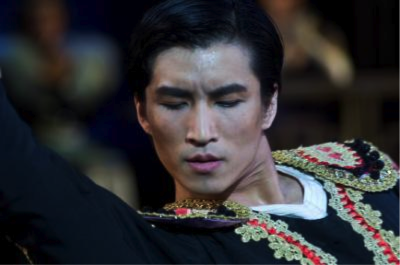
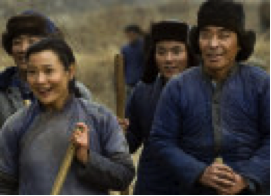
One of the most accomplished dancers at the Academy, thanks to the opening of doors between the U.S. and China through cultural exchange, Li was discovered by Ben Stevenson, famed Artistic Director of the Houston Ballet. Amazed by Li’s talent, Stevenson insisted he come to America and dance with the Houston Ballet as a cultural exchange student. Li was one of the first two such students allowed to go to America during the Mao regime.
Loving the dance, loving the freedom of being able to dance and express himself, and finding other loves, Li made the most difficult decision of his life – defect to the United States and leave his family in China. In what proved to become one the most famous and controversial defections in U.S. history, Li was locked up in the Chinese Consulate in Houston resulting in stand off between China and the U.S. So delicate and explosive was the situation that the FBI was called in and was even then Vice-President Bush. For 21 hours, America and the world watched and waited to see what Li’s fate would be. 21 hours later he walked out into the streets of Texas and never looked back, spending the next decades dancing his way into history as one of the famous and exquisite ballet dancers in the world.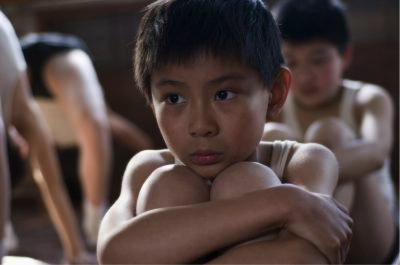
The search for a dancer to play Li Cunxin was not an easy one and it was ultimately Li Cunxin himself who found the perfect person in Chi Cao. As Li tells it, “They needed a guy who could really dance who wasn’t too bad looking.” Born in China, Chi also trained at the Beijing Dance Academy as well as the Royal Ballet School. Unbeknownst to everyone at the time he was hired to play the role of Li, Chi not only trained at Beijing Dance Academy, but his parents had been instructors when Li was there. Chi himself was also taught by two of Li’s former teachers. A principal dancer with Birmingham Royal Ballet, watching him on screen, it is easy to see why Chi is not only a leader in classical repertory, but an award winner. As Li, the first word that comes to mind is WOW!!!!! Chi is beautiful to watch. While I can find my way around various ballets and certain eras of ballerinas/noble ballerinas, I was unfamiliar with Chi Cao. He is strong and powerful with dancing that is beyond ethereal with his emotional conveyance. It is impossible to take your eyes from him. Adding to the difficulty factor for Chi was that he also had to dance as if Li, in Li’s style and movement. But he nails it from start to finish. His acting performance with stilted uncertainty of mannerisms and custom and the English language balances with the voice that comes through his dance. An emotional dichotomy played out in physical. Beyond impressed by Chi, according to Bruce Greenwood, Chi “would arrive on set at 4:00 a.m. and do 40 minutes of stretching, half hour of bar and 40 minutes of [ballet] class and then he would dance all day long.”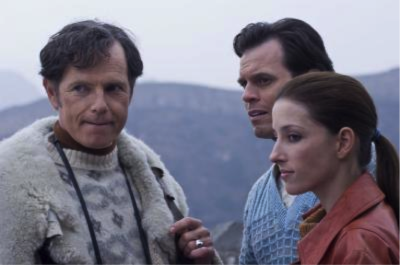
For Beresford, he had to look no further than his “Double Jeopardy” star, Bruce Beresford, to tackle the role of Ben Stevenson. “I read the book and then read the script. The book is really interesting and the script is a great distillation.” The real key to this film, it is Stevenson’s actions that set the wheels in motion, propelling the story forward. It was after all, Stevenson, who initially brought Li to America and it is through his own emotional complexities and sometimes egomaniacal self-serving acts that give real depth and substance to the film. His importance in the entire scenario is not lost on greenwood or his portrayal. A master of dialects and accents, Greenwood wanted to give an authentic portrayal of Stevenson, right down to his accent. “His voice is actually pitched quite high. I had a little bit of tape of him and some footage. I didn’t do [the voice] as high as Stevenson’s actually is, but I felt to get into it, it felt right. I talked to Bruce about it and we decided on pitch. His accent was interesting because he was from Portsmouth where the “r’s” are somewhat hard but it’s still an English accent. But he had been in Texas for 15 years or so, so there’s this melange of Southern England and Texas. Sometimes it sounds American and sometimes English, but it’s all by design.” The great challenge for Greenwood, however, was the physicality and mannerisms of Stevenson. The answer – “Ballet lessons. I lot of ballet lessons. I found a woman named Celeste Amos at Westside Ballet and she did 1:1 classes with me everyday. I had a lot of trouble with letting my wrist drop. I had some trouble with letting my core extend, my shoulders drape, but mostly it was conditioning. It was brutal conditioning. That was the beginning for my appreciation for the work ethic of dancers. ”
Joan Chen, as beautiful and stunning as ever, only gets better with age. Her skills are more nuanced, her inflections radiate life experience. As Li’s mother, she is mesmerizing. She wears her heart on her sleeve leading to the film’s most powerful and tear-jerking scenes. If you don’t have tears streaming down your face watching her, you have no heart.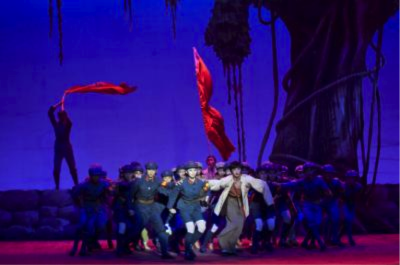
And it’s hard to ever think of Joan Chen getting older, but she is, although her nuanced skills are only getting better. Humble to a fault, for Chen she had to look no further than her own experience to play Li’s mother. “I’m a mother. And I think of my mother. I left home young, too. I left home at 14. It’s a very straightforward character. But when I arrived on the set (in China), I did observe a few women near us for certain posture and way of movement.” Chen herself came to the US as a student in 1981 at the same time as Li Cunxin and connects with the story on another emotional level. “When I left [China], it was an outrage. Why would she want to come to America? For my first year of studying in the US I couldn’t go home. I was afraid if I left, my student VISA wouldn’t hold and I couldn’t come back to continue my education. And then the big outrage in China and I didn’t know how to face the public. It was very painful. I was drawn to the story because I was too familiar with what Li was going through.”
And then there’s little Wen Bin Huang who played young Li. Cast out of a gymnastic/athletics school in China, he is cute, cute, cute as a button and a little scene stealer. Your heart just aches for him as Little Li as he tries and tries and tries to be the best but always seem to be one step behind. You just want to scoop him up. Such a delight and joy to watch. Just looking at him makes you smile.
Supporting cast includes a terrific turn by Kyle MacLachlan as attorney Charles Foster, the international relations attorney who was instrumental in securing Li’s release and aiding in his defection. Also notable is the ebullient Amanda Schull. A former dancer with the San Francisco Ballet, Schull has turned actress and jumped at the chance to play dancer Liz, Li’s love interest. “Having just started the transition from dance [to acting], the idea of being Liz was really exciting. It was more of a drama focused character with the dance underlying. That was particularly exciting. MAO’s LAST DANCER focuses on what it is to be an adult [dancer] and what you need to give up in pursuit of that passion and that focus. Liz had to sacrifice, but it’s Li’s sacrifice that is the dramatic and most obvious and painstaking to watch.”
Bruce Beresford is a master when it comes to the telling of human stories and human emotion and with MAO’S LAST DANCER he throws in a one-two wallop that will have you in tears. A true lover of the ballet, Beresford had already read Li Cunxin’s autobiography when he was approached about directing Jan Sardi’s screen adaptation. Known for his dedication to authenticity, by its very nature, the film presented a formidable challenge as Beresford was intent on shooting in China and retaining truth and accuracy.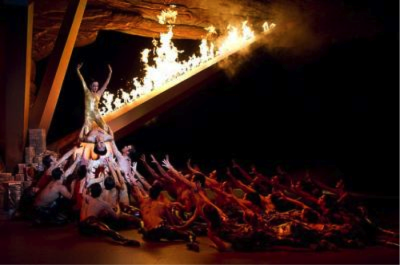
On meeting with Chinese ministry officials, Beresford first was the mandates that criticisms of Mao were not permitted and that any reference to Madame Mao was forbidden as she is a “disgraced non-person”, erased from China’s history. Although the film makes no direct criticisms of Mao, by the very historical acts that play out, the audience is able to form their own opinions. Omitting any reference to Mrs. Mao proved impossible and as it is part of the film, sadly, the Chinese government will not allow this beautiful work to play in China. According to Greenwood, “the bureaucracy is impenetrable.”
The majesty of China is showcased by Beresford and cinematographer Peter James. Having worked with James on “Driving Miss Daisy’, here the two celebrate China’s expansiveness and history lensing at the Great Wall and outer regions, then balancing the downtrodden landscaping palette with the color and drama of the ballet sequences. Some incredible slo-motion work is also implemented during the performance of intricate ballet sequences which just adds the grandeur and grace of the story and the dance.
Locating a stretch of the Great Wall some 100 miles from Beijing where the Wall was in a deteriorated condition, the reality and historical magnitude of this film strikes an emotional chord. Challenging was creating Li’s childhood village as it has long been destroyed but production designer Herbert Pinter found a remote mountain village that was “rebuilt”. Adding even more difficulty was the weather in China which had temperatures plunging below zero with gale force winds. Interestingly, Chi Cao and Australian ballerina Camilla Vergotis, who had to dance outside in these conditions, had no complaints believing that ” with the rigors of ballet training, a bit of dancing in sub-zero temperatures was a pushover.”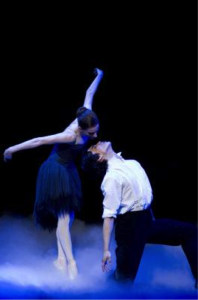
As if Beresford didn’t have enough to contend with from a production standpoint, he also had to direct “complicated scenes in a language I didn’t speak” and his presence was continually monitored and observed by officials throughout the shoot.
Described by Greenwood as Beresford having a directing style that’s “light on the reins. You have lots of discussions before hand and then once you see eye-to-eye, he’ll just make tiny little suggestions. You also learn by watching Beresford direct other people; buy listening.”One thing the cast are all in agreement on was the benefit of having Li Cunxin on set for much of the filming. According to Greenwood, “He’s very articulate and willing to tell stories. Stories for actors are very illustrative.”
Key to MAO’S LAST DANCER are numerous ballet sequences. Calling on choreographers Graeme Murphy and Janet Vernon, not only did they choreograph the exquisite ballet productions (the beauty and drama of Swan Lake is to die for) which were performed with full company and dress, but Murphy worked extensively with Greenwood on the specificity of nuanced fluidity and movement in his portrayal of Stevenson.
Completing the picture is a sumptuous score by Christopher Gordon.
MAO’S LAST DANCER has all the emotional gravitas of a potential Best Picture Oscar contender. Powerfully compelling and passionate, MAO’S LAST DANCER is a celebration of the human spirit, aiming for the heart and hitting it every time.
Li Cunxin – Chi Cao
Ben Stevenson – Bruce Greenwood
Niang – Joan Chen
Elizabeth – Amanda Schull
Mary McKendry – Camilla Vergotis
Directed by Bruce Beresford. Written by Jan Sardi based on the autobiography by Li Cunxin.











